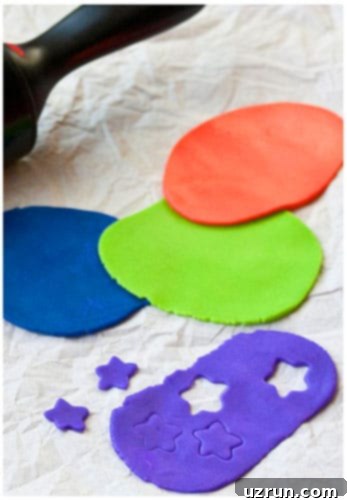Easy Homemade Marshmallow Fondant (MMF) Recipe: The Ultimate Guide for Cake Decorating
Unlock the secrets to creating stunning, professionally decorated cakes with this incredibly simple and delicious homemade marshmallow fondant recipe. Known affectionately as MMF, this versatile edible dough is a game-changer for anyone looking to elevate their baking and cake decorating skills, whether you’re a beginner or an experienced baker. Forget the often bland and expensive store-bought versions; our marshmallow fondant is made with just a few readily available ingredients, tastes wonderfully sweet like marshmallows, and offers unparalleled pliability for all your creative endeavors.
From crafting delicate cake toppers and intricate figures to achieving that flawlessly smooth finish on a covered cake or adding decorative accents to cupcakes and cookies, MMF is your go-to solution. This comprehensive guide will walk you through every step of the process, sharing essential tips, creative variations, and crucial troubleshooting advice to ensure your marshmallow fondant turns out perfect every single time. Prepare to transform your desserts into edible works of art with ease and confidence!
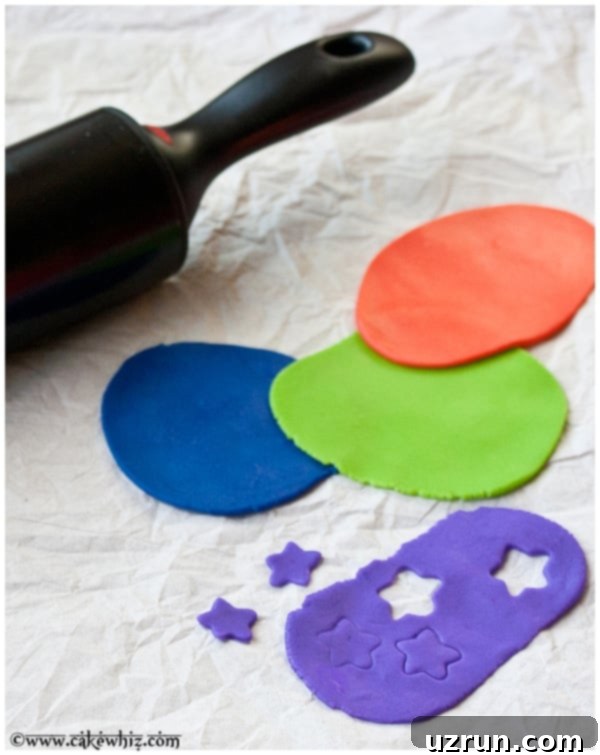
What is Fondant?
Fondant is a sweet, edible dough primarily used in cake decorating to create a smooth, porcelain-like finish on cakes. It’s incredibly pliable, allowing it to be rolled out thinly, cut into various shapes, and molded into intricate designs. Unlike traditional buttercream, which offers a soft, creamy texture, fondant provides a firm, stable surface that is ideal for elaborate decorations, sharp edges, and protecting cakes from drying out.
While often perceived as difficult to work with, especially for beginners, homemade marshmallow fondant (MMF) offers a much more forgiving and enjoyable experience. Its unique composition gives it a delightful, mild marshmallow flavor and a soft, chewy texture that is far superior to many commercial fondants. It’s the secret ingredient to transforming simple cakes into show-stopping masterpieces with a professional touch.
Why Choose Homemade Marshmallow Fondant (MMF)?
There are numerous compelling reasons to opt for making your own marshmallow fondant:
- Superior Taste: One of the biggest complaints about store-bought fondant is its often artificial or rubbery taste. Homemade MMF, on the other hand, boasts a pleasant, sweet marshmallow flavor that genuinely enhances your desserts.
- Cost-Effective: Commercial fondant can be quite expensive, especially if you decorate cakes frequently. Making MMF from scratch is significantly cheaper, utilizing common pantry staples.
- Simple Ingredients: You only need a handful of basic ingredients – marshmallows, powdered sugar, water, and shortening – avoiding the long list of stabilizers, preservatives, and artificial flavors found in many commercial products.
- Easy to Make: Despite its professional appearance, marshmallow fondant is surprisingly easy to prepare. The process involves simple melting and kneading, making it accessible even for novice bakers.
- Excellent Workability: MMF is known for its smooth, elastic texture, which makes it a joy to roll out, sculpt, and apply. It’s less prone to tearing and cracking than some other types of fondant.
- Customizable: You have complete control over the color and flavor of your fondant, allowing for endless creative possibilities to match any theme or occasion.
Key Ingredients for Marshmallow Fondant
Gathering these simple ingredients is the first step to creating your perfect MMF:
- White Marshmallows: A standard 10 oz (around 280g) bag is typically sufficient to cover an 8-inch round cake or create a good batch of decorations. Ensure they are fresh for best melting consistency.
- Water: A small amount, just a tablespoon or two, helps the marshmallows melt smoothly in the microwave or double boiler.
- Vanilla Extract: This adds a foundational, delicious flavor. Use a clear vanilla extract if you want to maintain a pure white fondant color.
- Powdered Sugar (Confectioners’ Sugar): This is the bulk of the recipe, transforming the melted marshmallows into a pliable dough. Sifting is crucial to prevent lumps.
- Vegetable Shortening: Absolutely essential for preventing the sticky mixture from adhering to your hands, tools, and work surface. You’ll need a generous amount.
- Gel Food Coloring: If you desire vibrant colors beyond white, gel food coloring is preferred over liquid, as liquid colors can alter the consistency of the fondant, making it sticky.
Essential Equipment for Making MMF
Having the right tools will make the process much smoother and more enjoyable:
- Microwave-Safe Bowl: A large, deep bowl is perfect for melting marshmallows.
- Sturdy Spatula or Spoon: For mixing the melted marshmallows and powdered sugar.
- Measuring Cups and Spoons: For accurate ingredient measurements.
- Fine-Mesh Sifter: Crucial for sifting powdered sugar to ensure a lump-free fondant.
- Large Silicone Mat or Non-Stick Surface: Ideal for kneading and rolling out fondant without excessive sticking. Alternatively, a clean countertop generously greased with shortening will work.
- Rolling Pin: A non-stick rolling pin or one lightly greased with shortening is best for rolling out the fondant evenly.
- Gloves (Optional but Recommended): Disposable gloves, greased with shortening, can make kneading less messy, especially during the initial sticky phase.
- Airtight Container or Ziploc Bags: For proper storage of your finished marshmallow fondant.
How to Make Easy Marshmallow Fondant from Scratch: Step-by-Step Instructions
Creating your own marshmallow fondant is a straightforward process. Follow these detailed steps for perfect results:
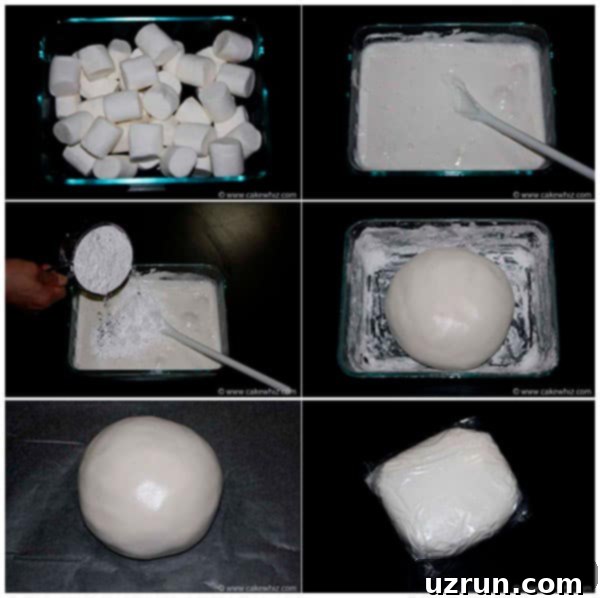
- Melt Marshmallows: Place the white marshmallows and water in a large, deep microwavable-safe bowl. Microwave on high for 30-second intervals, stirring well after each interval, until the marshmallows are completely melted and smooth. This usually takes 1 to 2 minutes. Be careful not to overheat, as this can make the fondant stiff.
- Add Flavoring and Initial Sugar: Once melted, stir in the vanilla extract until fully combined. Next, gradually add about half of your sifted powdered sugar (around 2 cups) to the melted marshmallow mixture, mixing thoroughly with a heavily greased spatula. The mixture will become very thick and sticky.
- Prepare for Kneading: Liberally grease your hands and a clean work surface (a silicone mat or a large countertop) with vegetable shortening. This step is crucial to prevent the extremely sticky mixture from becoming unmanageable.
- Knead the Fondant: Transfer the marshmallow-sugar mixture onto your greased work surface. Begin kneading the mixture, gradually incorporating the remaining sifted powdered sugar, a little at a time. Continue kneading until the mixture transforms into a smooth, pliable, and elastic dough with the consistency of play-dough. It should no longer stick to your hands or the work surface. This kneading process typically takes 8-15 minutes, depending on the marshmallow batch and humidity.
- Incorporate Color (Optional): If you want to color your fondant, add gel food coloring during the kneading process. Start with a tiny amount and knead until the color is evenly distributed. Add more gradually until you achieve your desired shade. Remember, colors often deepen as the fondant rests.
- Rest and Store: Once kneaded to perfection, lightly grease the ball of marshmallow fondant with more vegetable shortening. Wrap it tightly in multiple layers of plastic wrap (saran wrap) to prevent air exposure, then place it in a sealed airtight container or a heavy-duty Ziploc bag. Store it at room temperature overnight. This resting period allows the fondant to firm up slightly, making it much easier to roll out and work with the next day.
Wonderful Ways to Use Vanilla Marshmallow Fondant
The versatility of MMF is truly its superpower. Here are some fantastic ways to utilize your homemade creation:
- Cover a Cake with a Smooth Finish: Roll out the marshmallow fondant thinly and drape it over your frosted cake (usually with a crumb coat of buttercream) to achieve a flawless, smooth, and professional look, as seen in this Tiered 4th of July Cake. It provides a perfect canvas for further decoration.
- Create Intricate Models and 3D Figures: Its pliable nature makes it excellent for sculpting. Mold it with your hands or use special tools to create charming animals (turkeys, dinosaurs, bunnies, bees, ladybugs) or delicate flowers like these pansies.
- Design Eye-Catching Cake Toppers: Fashion custom toppers like elegant Easy Bows or vibrant Easy Flowers to personalize your cakes for any celebration.
- Cut Out Shapes and Letters: Use various cookie cutters to create decorative shapes, letters, or numbers. These can be used as borders, patterns, or messages on cakes and cupcakes.
- Decorate Cookies: Roll out thin sheets of MMF and cut them to fit your cookies, creating a smooth, sweet layer for decorating. This works wonderfully for fun designs like Emoji Cookies, Sports Cookies, or beautiful Flower Cookies.
- Cupcake Accents: Beyond toppers, MMF can be used to create small, edible elements like leaves, polka dots, or swirls to adorn your cupcakes.
Marshmallow Fondant vs. Regular Fondant: What’s the Difference?
While both are used for similar decorating purposes, there’s a significant distinction. Regular, traditional fondant, often store-bought, typically contains a much longer list of ingredients, including sugar, corn syrup, water, palm oil, stabilizers, preservatives, glycerine, and various thickeners and flavors. Its texture can sometimes be firmer or more elastic than MMF, but its taste is often less appealing to many.
Homemade marshmallow fondant, on the other hand, relies on the simple synergy of marshmallows, powdered sugar, and a little water and extract. This minimalist ingredient list results in a softer, more pliable, and distinctly marshmallow-flavored dough that is often preferred for its taste and ease of preparation.
Is Marshmallow Fondant the Same as Marzipan?
No, marshmallow fondant is not the same as marzipan. Marzipan is an almond-based confection made primarily from ground almond flour (or almond meal) and sugar, often with egg whites or honey. It has a distinct almond flavor and a slightly grainy texture. While both can be molded into figures and used for cake decorating, marzipan is more commonly found in traditional European desserts and offers a different taste and handling experience compared to the sweet, bouncy texture of MMF.
Is Marshmallow Fondant the Same as Modeling Chocolate?
Again, no. Modeling chocolate (also known as candy clay) is made by combining melted chocolate (white, milk, or dark) with corn syrup. This creates a highly moldable, clay-like consistency that is fantastic for sculpting detailed figures and decorations, and it tastes distinctly of chocolate. While MMF and modeling chocolate share similar applications in terms of sculpting, their base ingredients and flavor profiles are completely different. MMF is primarily sugar and marshmallow, offering a lighter, sweeter taste, while modeling chocolate is richer and chocolate-flavored.
Exciting Variations for Your Marshmallow Fondant
Once you’ve mastered the basic recipe, feel free to experiment with these simple variations to customize your MMF:
- Tint it with Gel Food Coloring: This is the most common variation. As mentioned, use only gel-based food coloring for vibrant hues. Liquid food coloring can make the fondant sticky and alter its consistency. Add small amounts gradually during the kneading process for best control. I have a detailed post on How to Color Fondant for more insights.
- Try a Different Flavor Extract: Replace the vanilla extract with other clear extracts to create unique flavor profiles. Almond, coconut, maple, peppermint, lemon, orange, or even a few drops of a specific fruit emulsion can transform the taste of your fondant.
- Add Some Cocoa Powder for Chocolate MMF: For a delicious chocolate-flavored fondant, sift in about ¼ to ½ cup of unsweetened cocoa powder along with your powdered sugar. Adjust the amount to achieve your desired chocolate intensity. You might need slightly less powdered sugar or a tiny bit more shortening if the cocoa powder makes it too dry.
Expert Tips and Techniques for Marshmallow Fondant Success
Achieving perfect marshmallow fondant is easy with these tried-and-true tips:
- Adjust the Consistency as Needed: Fondant consistency can vary based on humidity and marshmallow brand. If your dough feels too dry and is cracking, knead in a small amount (half a teaspoon at a time) of vegetable shortening to make it more pliable. If it’s too wet and sticky, gradually knead in more sifted powdered sugar until it reaches the desired play-dough consistency.
- Do Not Refrigerate for Storage: Marshmallow fondant should never be refrigerated or frozen, whether as a raw dough or on a decorated cake. The moisture and temperature fluctuations in the fridge can cause condensation to form, making the fondant sticky, soft, or even melt, ruining its texture and appearance. Store it at cool room temperature.
- Always Use Fresh Marshmallows: For the best melting and kneading results, ensure your marshmallows are fresh and soft. Stale or hardened marshmallows will be difficult to melt into a smooth mixture and can result in lumpy or grainy fondant.
- Generously Grease Hands, Tools, and Work Surface: Marshmallow fondant, especially in its initial stages, is incredibly sticky. Apply a liberal amount of vegetable shortening to your hands, spatula, and kneading surface. This acts as a barrier, preventing the fondant from sticking and making it much easier to handle.
- Add Gel Food Coloring Gradually: When coloring fondant, always start with a very small amount of gel color on a toothpick. Knead it in completely before adding more. It’s much easier to deepen a color than to lighten it, and adding too much at once can impact the fondant’s consistency.
- Utilize a Silicone Mat for Rolling: A large silicone mat is an invaluable tool when working with fondant. It provides a naturally non-stick surface, making it easier to roll out the fondant thinly and evenly without it sticking to your counter or rolling pin.
- Dust Your Work Surface with Powdered Sugar (or Cornstarch): When rolling out your fondant, lightly dust your work surface and rolling pin with sifted powdered sugar or cornstarch to prevent sticking. Use sparingly to avoid drying out the fondant.
- Allow Fondant to Rest Overnight: For optimal results, wrap your freshly made MMF tightly and let it sit at room temperature overnight. This resting period allows the sugar to fully dissolve and absorb, resulting in a smoother, more stable, and easier-to-handle fondant with a better texture.
- Re-soften Hardened Fondant: If your stored MMF has become a little hard or stiff over time, don’t worry! Rub a bit of shortening onto it and knead it until it softens and becomes pliable again. For tougher cases, microwave it in 5-second increments, kneading after each interval, until it’s workable.
- For a True White Color, Use Clear Extracts: If you aim for a pristine white fondant, ensure you use clear vanilla extract or any other clear flavoring extract. Regular vanilla extract can have a yellowish tint that will result in an off-white or slightly cream-colored fondant.
- Consider Buying Red and Black Fondants: While homemade MMF is fantastic, red and black are notoriously difficult colors to achieve vibrantly from scratch. They require a large amount of gel coloring, which can sometimes alter the fondant’s consistency, and often need a few days to deepen to their true shade. For deep, rich reds and blacks, purchasing pre-made fondant might save you time and frustration.
- Understanding Fondant Drying: Marshmallow fondant will dry hard if exposed to air for several hours or days, making it perfect for sturdy figures, flowers, and toppers. However, if used to cover a cake with a layer of buttercream frosting underneath and then protected from excessive air exposure (e.g., in a cake box), it will remain relatively soft and chewy.
Troubleshooting Common Marshmallow Fondant Issues
Don’t be discouraged if your MMF isn’t perfect on the first try. Here’s how to tackle common problems:
- Fondant is Too Dry: If your fondant is cracking, tearing, or stiff when you try to roll it out, it’s too dry. This often happens if too much powdered sugar was added, or if the marshmallows were overheated. To fix, knead in a very small amount (¼ to ½ teaspoon) of vegetable shortening at a time until it becomes pliable and smooth again.
- Fondant is Too Wet/Sticky: If the fondant is sticking to everything and is difficult to handle, it’s too wet. This can be due to not enough powdered sugar, too much liquid extract, or high humidity. To remedy this, gradually knead in more sifted powdered sugar, a tablespoon at a time, until it reaches a smooth, non-sticky, play-dough consistency.
- Fondant is Lumpy or Has Air Bubbles: Lumps usually indicate that the powdered sugar was not sifted before adding, or the marshmallows were not fully melted and smooth. Ensure powdered sugar is always sifted. Air bubbles typically form from insufficient kneading. Continue kneading the fondant firmly on a greased surface until it becomes completely smooth and any air bubbles are pushed out. For stubborn bubbles when rolling, you can pop them with a clean pin and then smooth over the area.
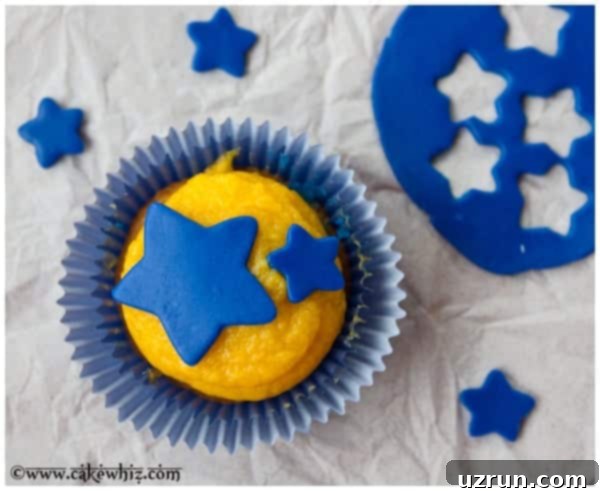
Proper Storage of Marshmallow Fondant
Correct storage is key to keeping your homemade MMF fresh and workable for future projects.
- Store at Room Temperature: After kneading, lightly grease the entire surface of the fondant ball with vegetable shortening. This protective layer helps prevent it from drying out. Then, wrap it meticulously in several layers of plastic wrap (saran wrap), ensuring no air pockets. Place this tightly wrapped fondant in an airtight container or a heavy-duty Ziploc bag. Store it in a cool, dry pantry away from direct heat and moisture.
- Can This Be Made Ahead of Time? Absolutely! Marshmallow fondant can be prepared up to 2 weeks in advance when stored properly at room temperature. This makes it a fantastic option for planning elaborate cake designs without last-minute stress.
- Can You Refrigerate Fondant Decorated Cakes? Generally, it’s not recommended. Refrigerators contain moisture, which can cause the fondant to become soft, sticky, or develop condensation beads as the cake comes to room temperature. This condensation can create an unpleasant, glistening, and sometimes runny appearance on your beautiful decorations. While some decorators suggest placing a fully chilled, fondant-covered cake in a high-quality corrugated cardboard box sealed tightly before refrigerating to create a moisture barrier, this theory hasn’t been universally proven. It’s usually safer to store decorated cakes at room temperature if possible, or only refrigerate briefly if absolutely necessary and consume quickly.
- Can You Freeze This? No, freezing marshmallow fondant is not recommended. Similar to refrigeration, thawing frozen fondant will inevitably lead to significant condensation, making it extremely sticky, difficult to handle, and potentially affecting its texture and pliability. It’s best to stick to room temperature storage for MMF.
Recipe
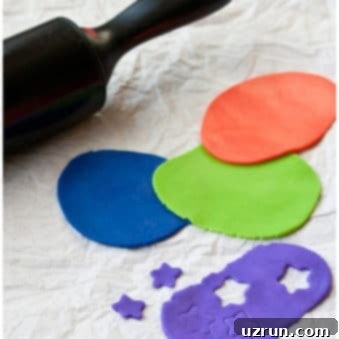
How to Make Marshmallow Fondant (MMF)
Abeer Rizvi
Pin Recipe
20 minutes
20 minutes
Dessert
American
2 Cups
19 kcal
Want to Save This Recipe?
Enter your email & I’ll send it to your inbox. Plus, get great new recipes from me every week!
By submitting this form, you consent to receive emails from CakeWhiz
Ingredients
- 1 packet White marshmallows 10 oz. bag
- 1 tablespoon Water
- 2 teaspoon Vanilla extract Or any other extract of your choice
- 3 – 4 cups Powdered sugar Sifted
- Vegetable shortening As needed
Instructions
-
Add marshmallows and water in a deep microwavable-safe bowl.
-
Heat until marshmallows are melted.
-
Add powdered sugar.
-
Continue mixing and then kneading with heavily greased hands and spatula until you have a play dough consistency.
Notes
- Read all my tips above for detailed guidance.
- For storage, grease it with some shortening and cover it tightly in saran wrap at room temperature, away from direct heat and moisture.
- Please scroll down and read the comments. A few of my readers were kind enough to let me know what can be used instead of shortening in Australia, UK and other places where shortening is unavailable.
Nutrition
Calories:
19
kcal
Carbohydrates:
1
g
Sodium:
1
mg
Sugar:
1
g
An automated tool is used to calculate the nutritional information. As such, I cannot guarantee the accuracy of the nutritional information provided for any recipe on this site.
Tried this recipe?
Leave a comment below or rate and tag @cakewhiz on social
